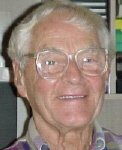Silvan Says #1: Name and Address (How Memory Works)
 This is the first in a series of short articles that look deeply at a particular passage or section of Silvan Tomkins’s work.
This is the first in a series of short articles that look deeply at a particular passage or section of Silvan Tomkins’s work.
By Dave McShane
When Silvan Tomkins wrote about memory he took pains to specify what a name is and how it is involved in retrieving information stored at an “address” in the brain. In differentiating between “name” and “address,” Dr. Tomkins anticipates by several decades the work of contemporary brain scientists such as LeDoux, Eagleman, and Damasio, as they distinguish between implicit and explicit memory.
Silvan Says:
“What is a name? It purports to be a relatively unique symbol for something. The emphasis is on difference rather than positive attributes. It is a symbol of limited expansion characteristics, but this is its chief virtue. It is peculiarly appropriate for an organism that wishes to preserve the idiosyncratic reference to an object of its past experience.
We will define “name” according to this usage but in a somewhat more general way. By a “name” we will mean a message, conscious or unconscious, that is capable of finding, activating, and retrieving a particular trace at a particular address. We will assume that a “name” itself may or may not have an address and that this address itself may or may not therefore have a “name.”
In recognition, as contrasted with reproduction, the sensory input may constitute the only name of the appropriate address insofar as it initiates retrieval processes that activate and retrieve a specific trace at a specific address. In the case of much of our past experience such stimuli are the only names of specific addresses. Unless the individual encounters the stimulus, he may not be able to remember because the name itself has no brain address.” (1)
And what happens when a memory has an address but not a name? It becomes a consciously inaccessible memory, which Tomkins says is a “trace” (a neural pattern in the brain) with a memory address but no name by means of which it can be consciously retrieved.
To get a feel for what this means, let’s look at what happened to Fred and his puppy. One day Fred hears his name called and goes outside to see what’s going on. As Fred steps out the door he sees only the back of Jack, a mean neighbor kid running away. Then he hears a whining from up in the branches of the tree, and sees that the boy had put his puppy up in the tree. But before Fred could save him, his puppy tumbles down, hits the ground and gives out a yipe. Fred, terrified, runs to the puppy and picks it up. The terror is brief. The puppy seems no worse for the wear. That night Fred sleeps with the puppy to make sure he is all right. He loves the puppy now even more than before. The whole terrifying scene from earlier in the day is forgotten, consciously. Puppy is fine and all is right with the world.
Over the years Fred has an uncomfortable feeling about people named Jack. Any whining puppy triggers an undue amount of attention from Fred. But he doesn’t know why; it is stored as a nameless address.
Fast forward many years. Fred, grown now with kids of his own, hears a commotion in the neighborhood. It seems that their neighbor’s kitty has climbed up a tree and cannot get down. All it can do is go up higher and it is meowing now. The fire department has been called. A fireman named Jack is climbing up his ladder to rescue the kitty, and Fred is overwhelmed by a childhood scene. There he is in his front yard, a little boy again with his puppy on the ground by the tree. There is a tinge of terror, the sight of his precious puppy (now gone for decades). Bingo! Conscious.
With sufficient similarities to the childhood scene such as “Jack” and “animal caught in a tree,” Fred can consciously now sort out why “Jack” has always been a sort of dubious name, and puppy whines have almost tormented him with pathos. The address now has a name.
This use of “name” and “address,” first proposed by Tomkins in 1962, prefigures recent discoveries about implicit and explicit memory in neuroscience. As LeDoux puts it in Synaptic Self, “The self is maintained by systems that function both explicitly and implicitly . . . Many neural systems that engage in implicit learning . . . work unconsciously not because of some grand design to hide aspects of mental life from our sentient self but simply because their operation is not directly accessible by the conscious brain.” (2)
David Eagleman puts it even more vividly: “Most of what we do and think and feel is not under conscious control . . . The vast jungles of neurons operate their own programs . . . The brain works its machinations in secret, conjuring ideas like tremendous magic. It does not allow its colossal operating system to be probed by conscious cognition.” (3) Brain programs that are aimed at maintaining basic functioning and homeostasis are beyond the reach of self-consciousness. We cannot “know” them from the inside, like we can “know” hunger because this program files a report to consciousness as well as to other body systems.
Antonio Damasio describes it as such: “The emotional signal can operate entirely beneath the radar of consciousness. It can produce alterations in working memory, attention, and reasoning so that the decision-making process is biased toward selecting the action most likely to lead to the best outcome, given prior experience. The individual may not even be cognizant of the covert operation.” (4) So, while we can be glad for Fred finally recalling the day his puppy fell out of a tree, how many countless comparable scenes are buried in every human psyche? It is these that bias our judgment about guys named Jack, or trigger an inordinate amount of compassion for a whining puppy. The first secret underlying successful therapy is finding a name for those addresses which house the scenes which, from their hidden perch, attempt to dictate our choices.
Thank you, Silvan.
Dave McShane is a retired Presbyterian Minister and was a friend of Silvan Tomkins for many years.
References
1. Excerpted from: Tomkins SS (1992). Affect Imagery Consciousness Volume IV, Cognition. New York: Springer, page 140.A similar but somewhat less developed definition of name appears in Volume II on page 330.
2. LeDoux A (2002). Synaptic Self: How Our Brains Become Who We Are. New York: Penguin Putnam.
3. Eagleman D (2011). Incognito: The Secret Life of the Brain. New York: Pantheon.
4, Damasio A (2003). Looking for Spinoza: Joy, Sorrow, and the Feeling Brain. Orlando, Florida: Harcourt, p. 148.


